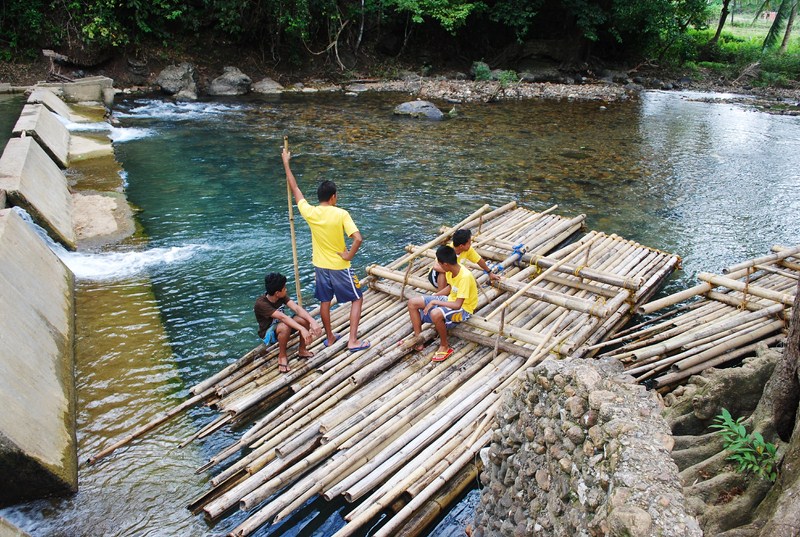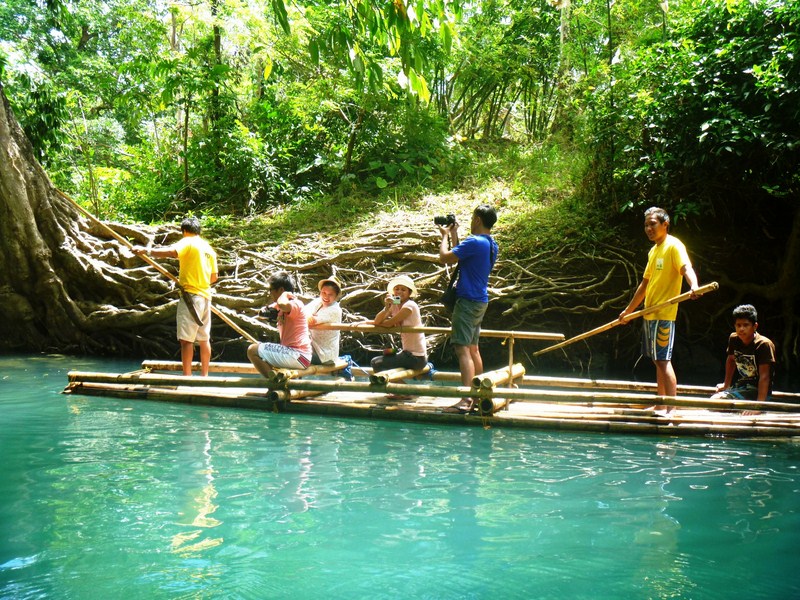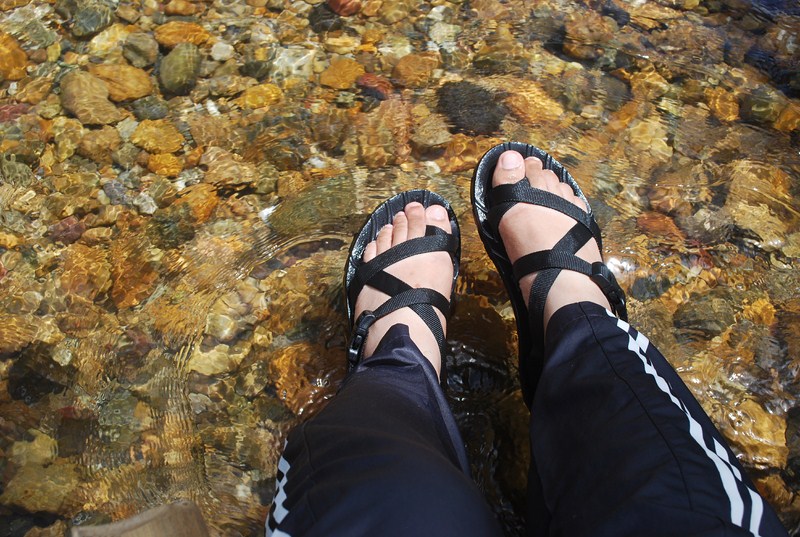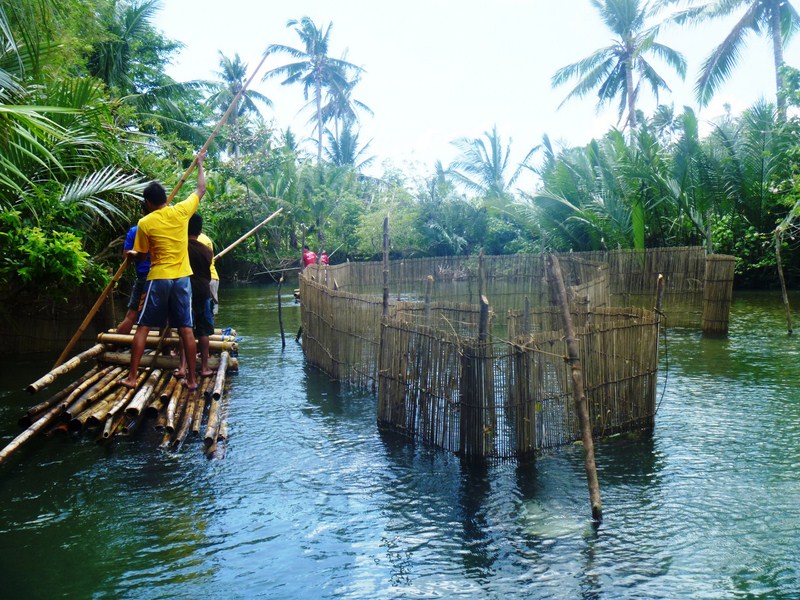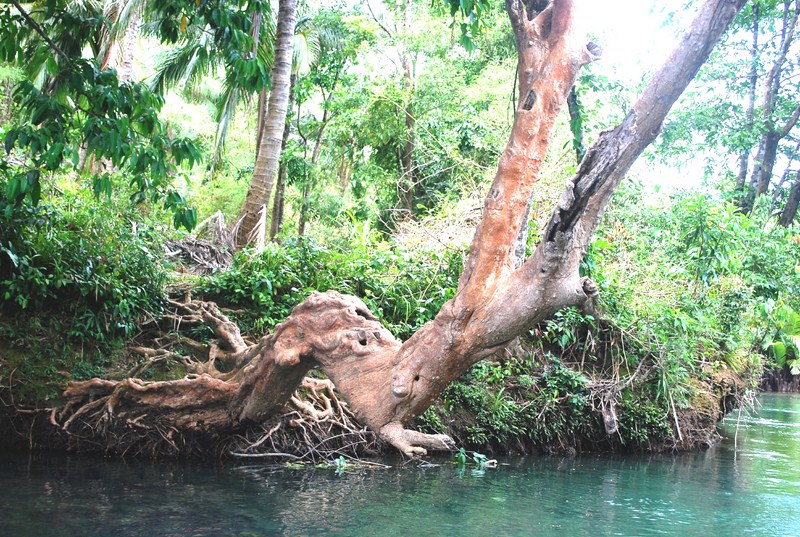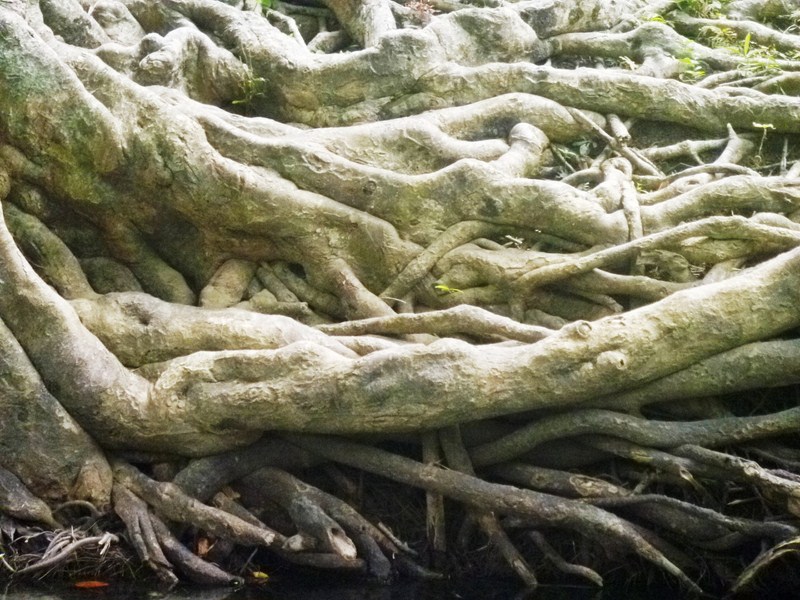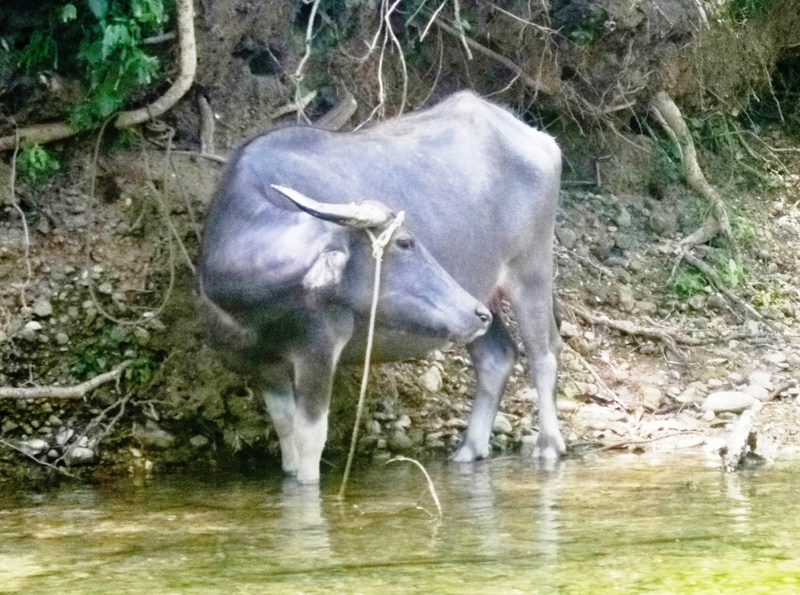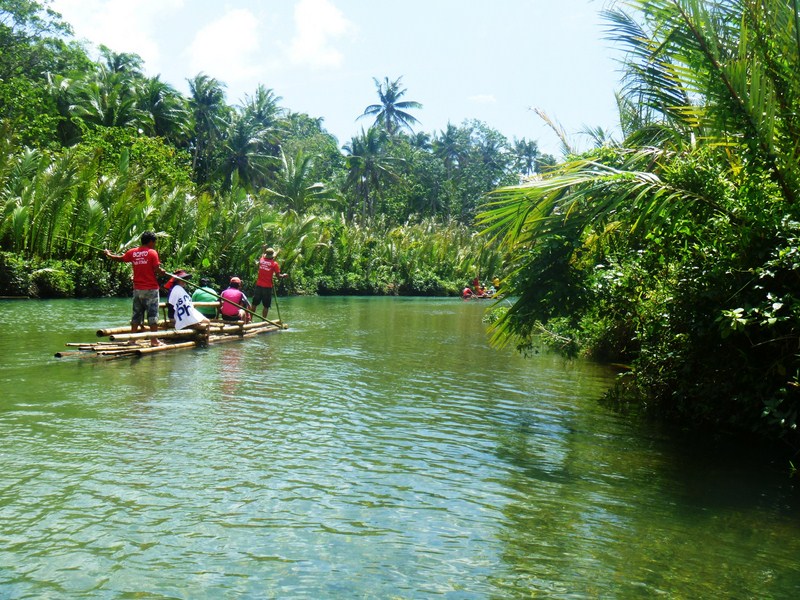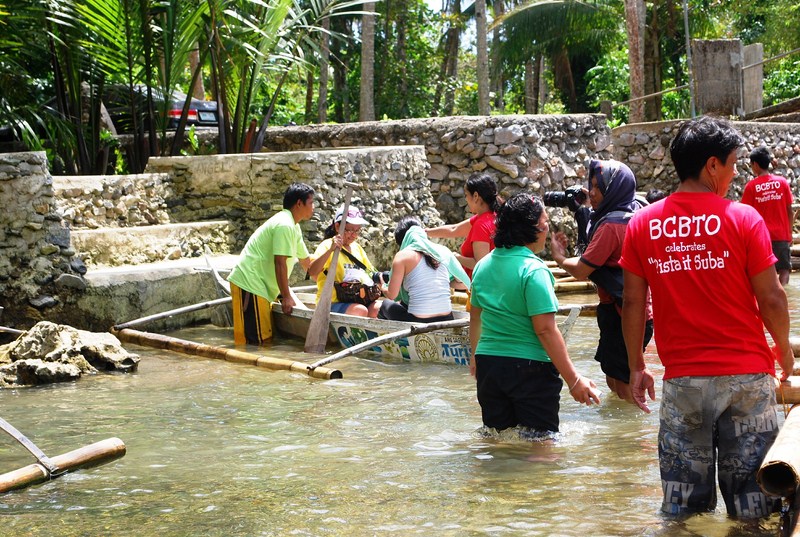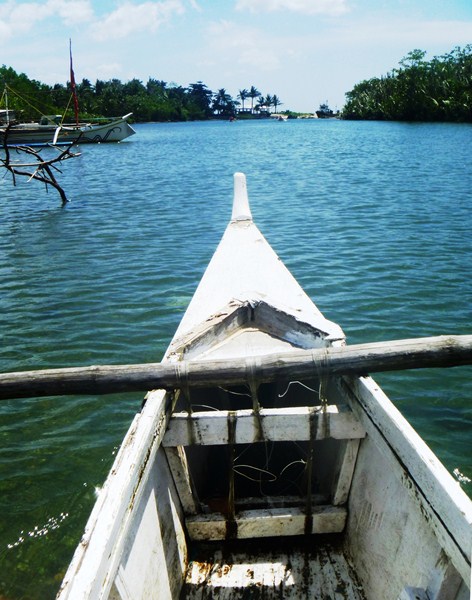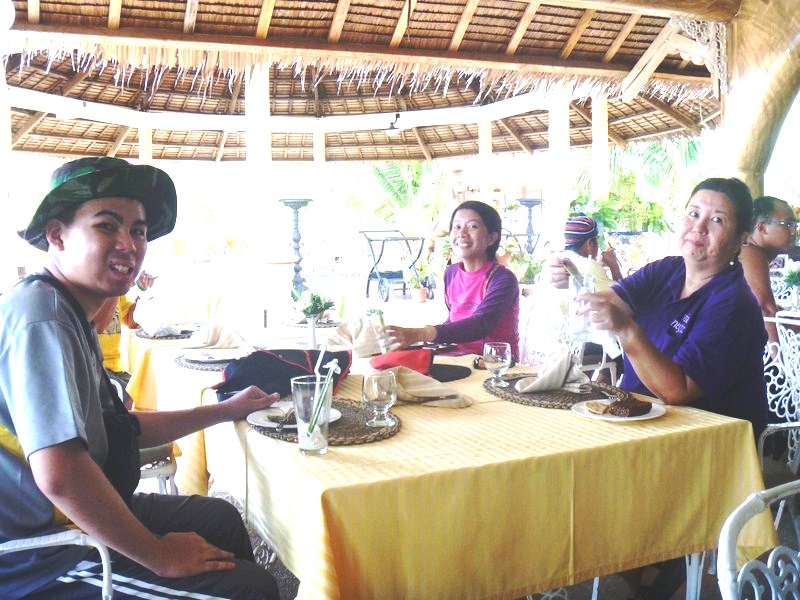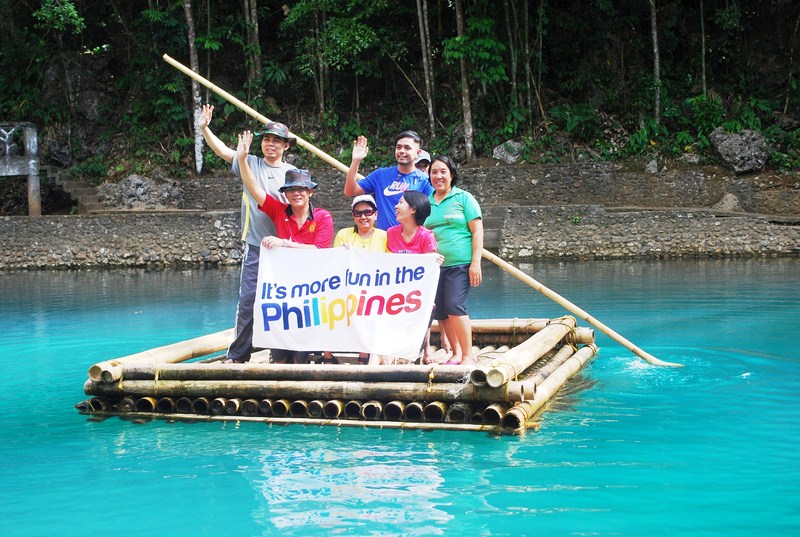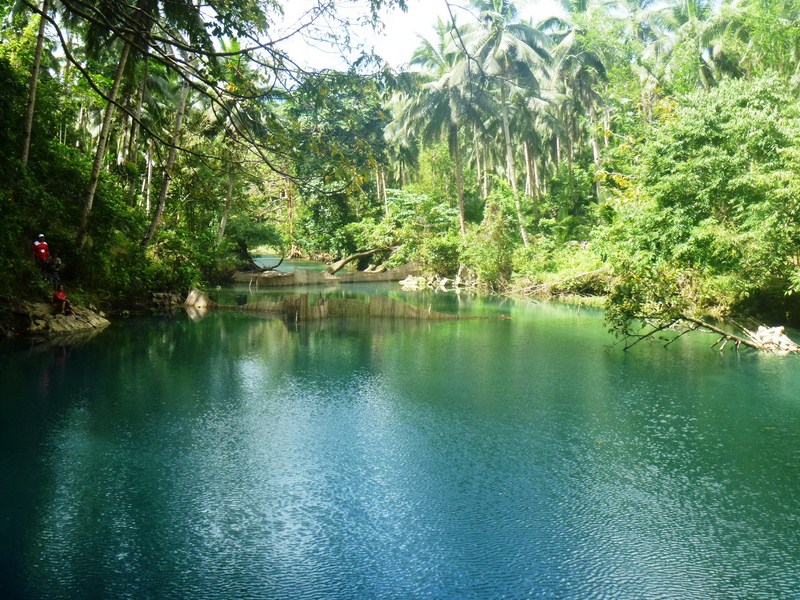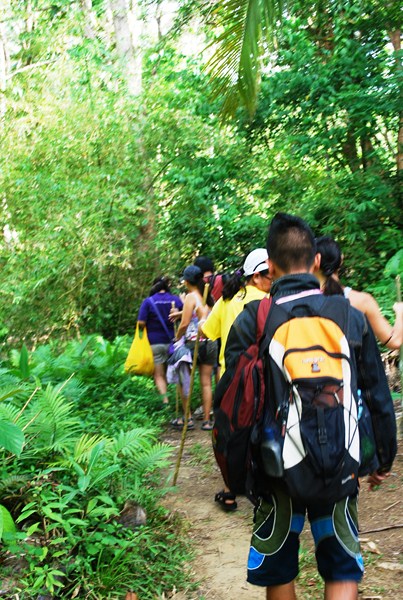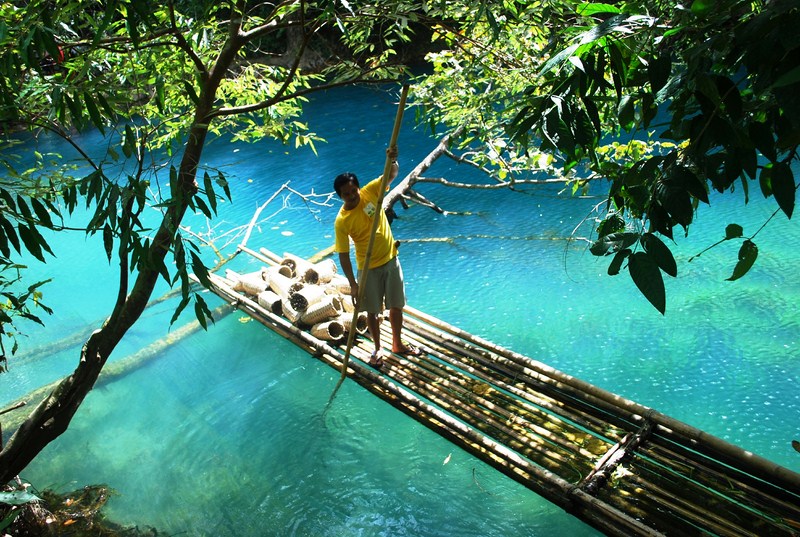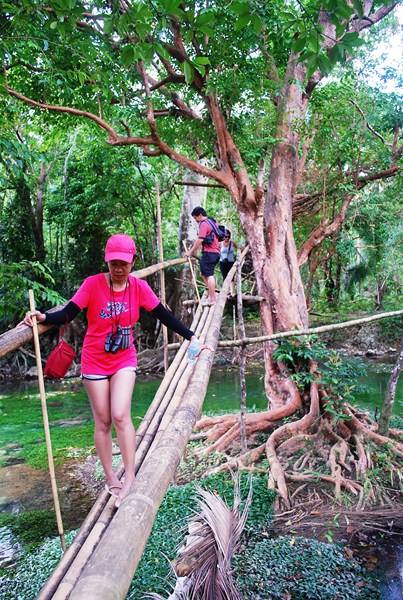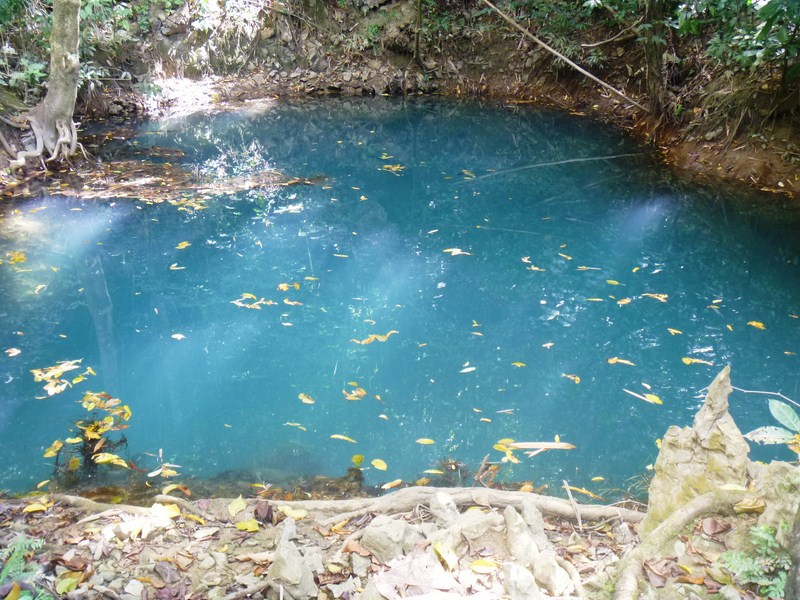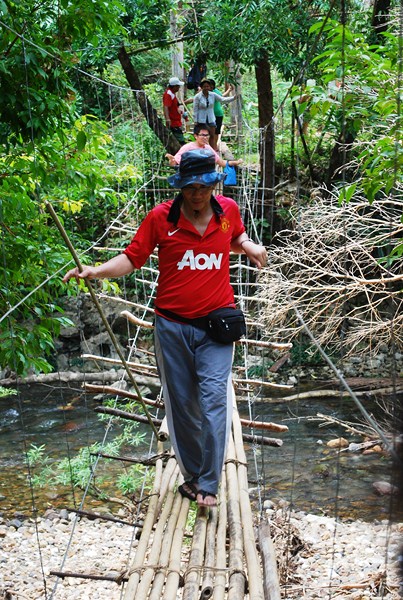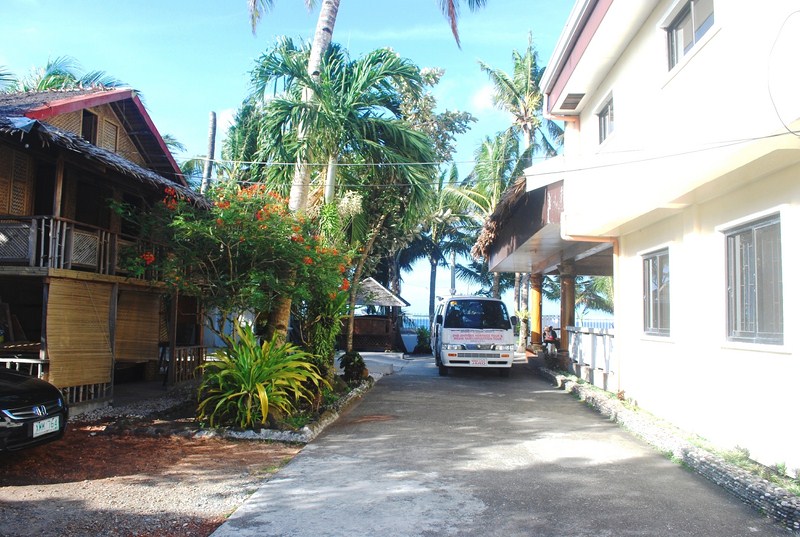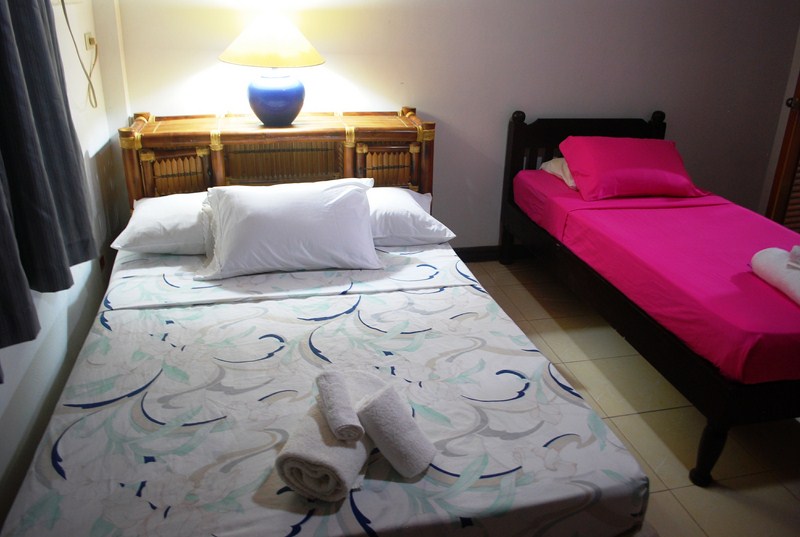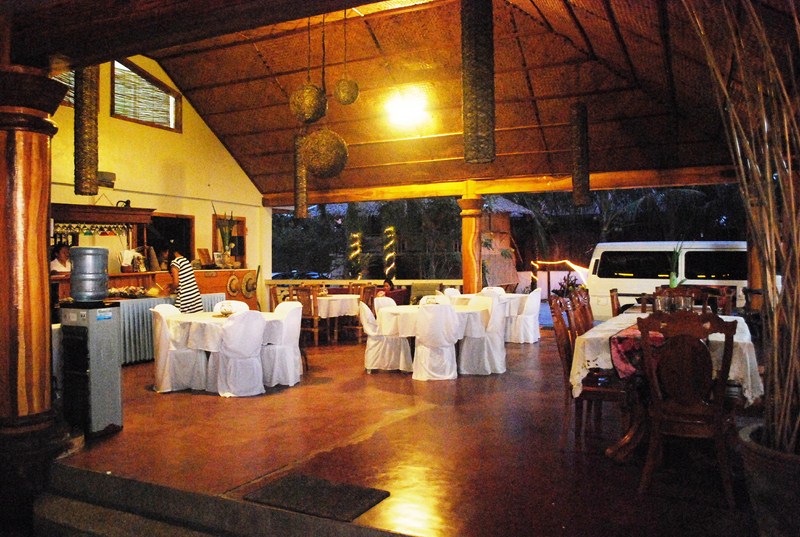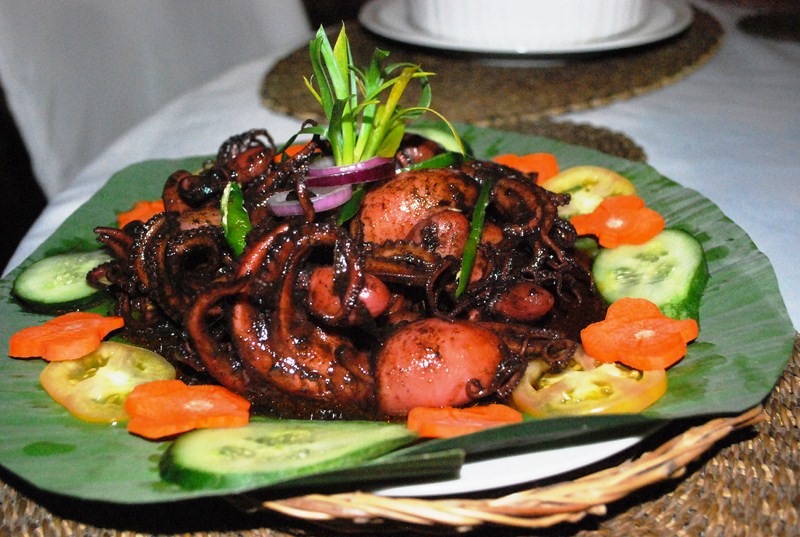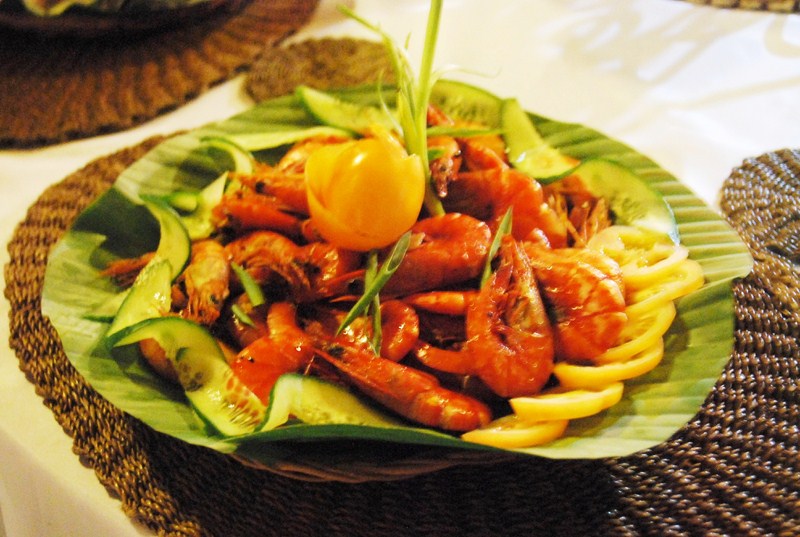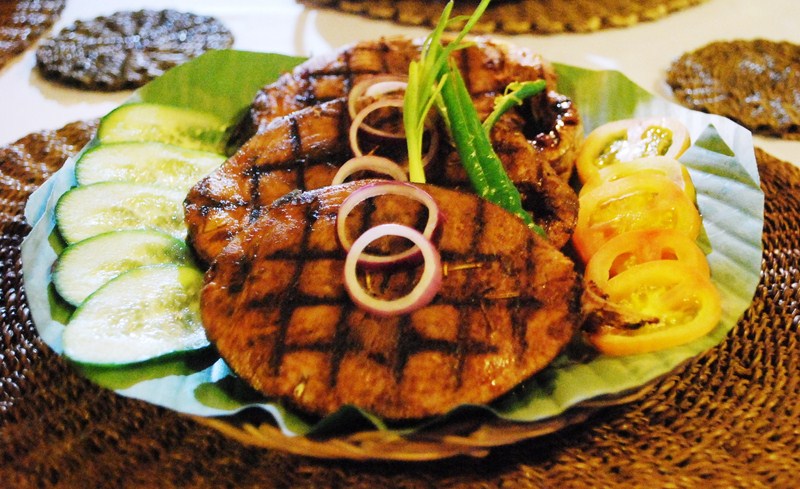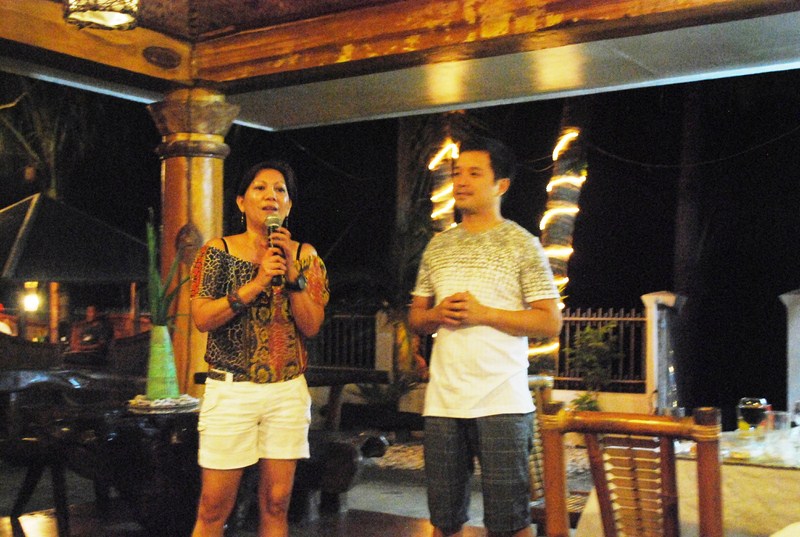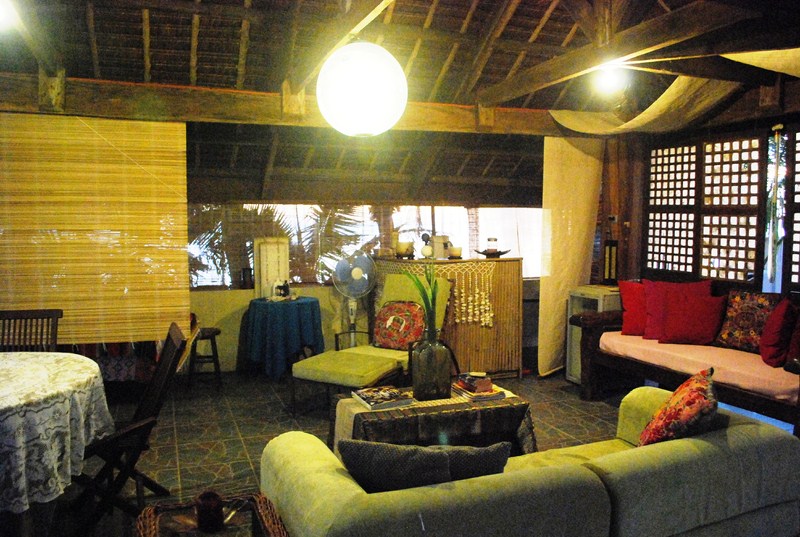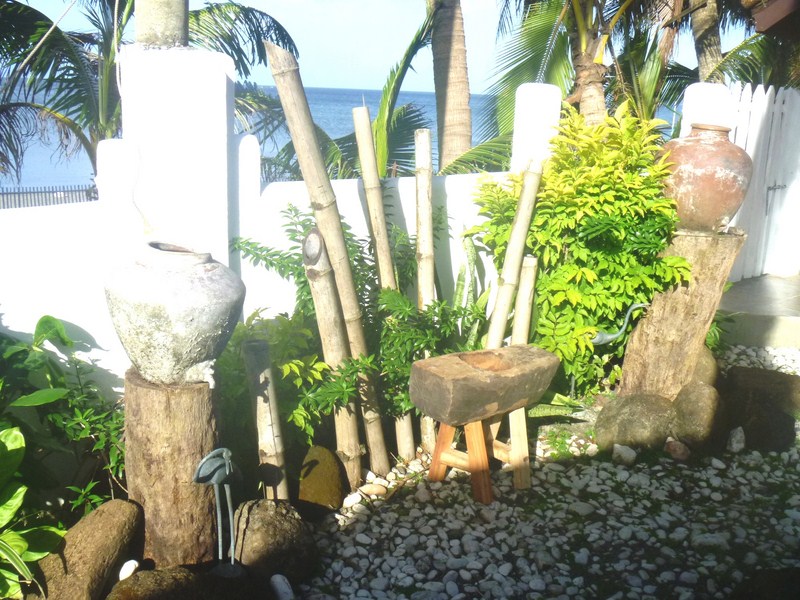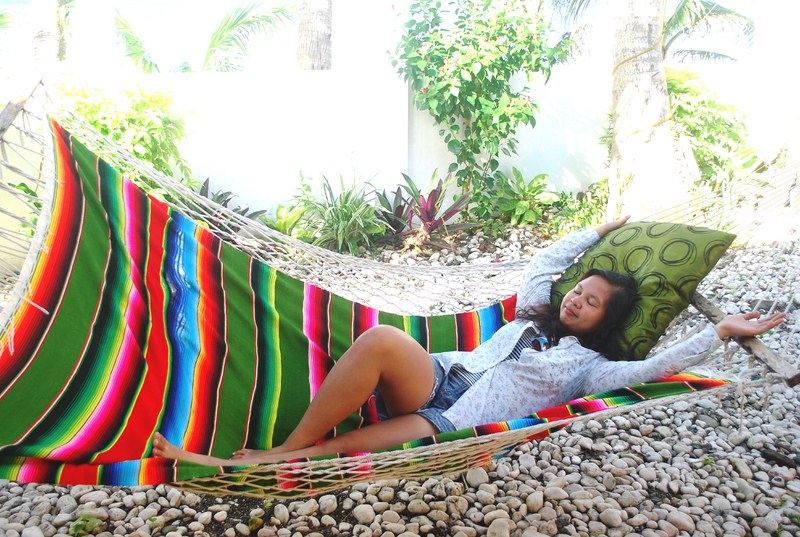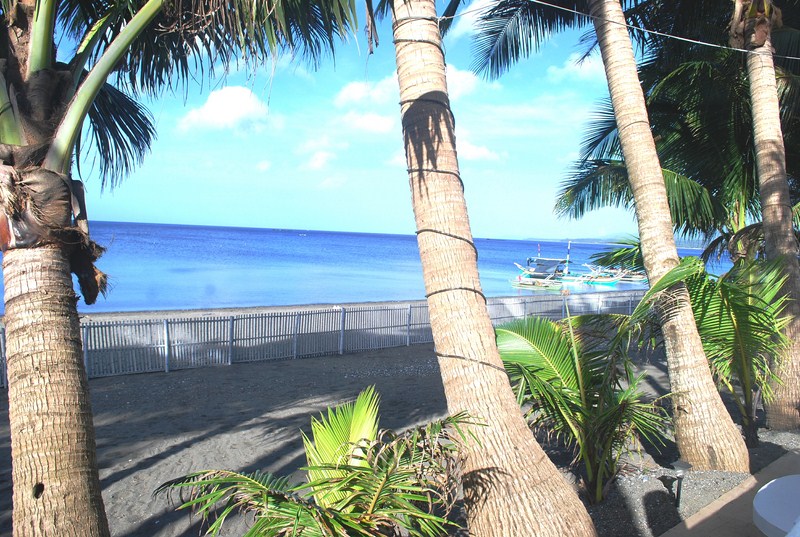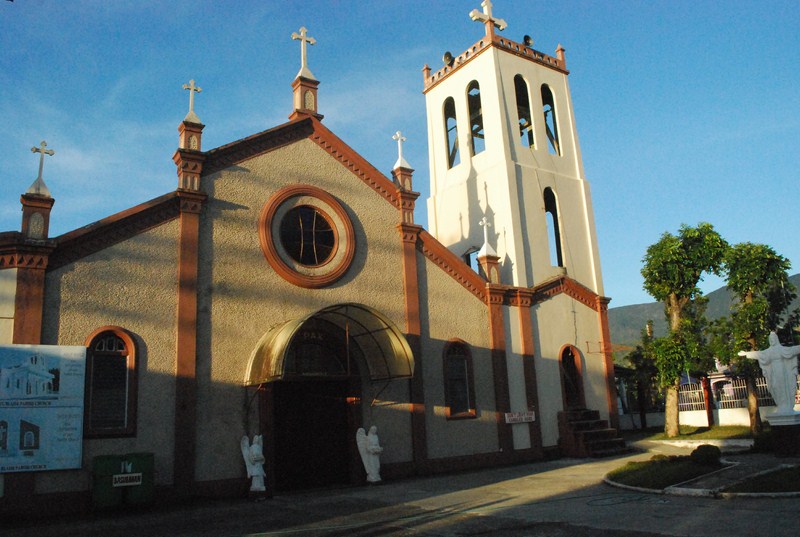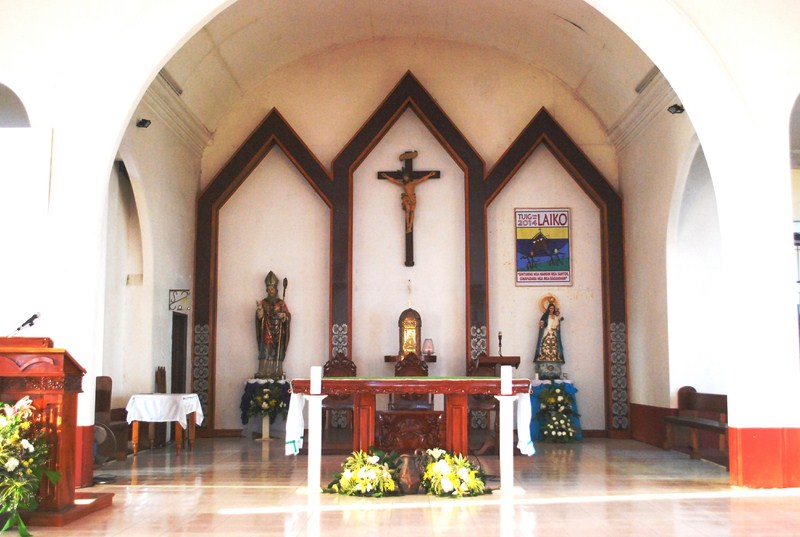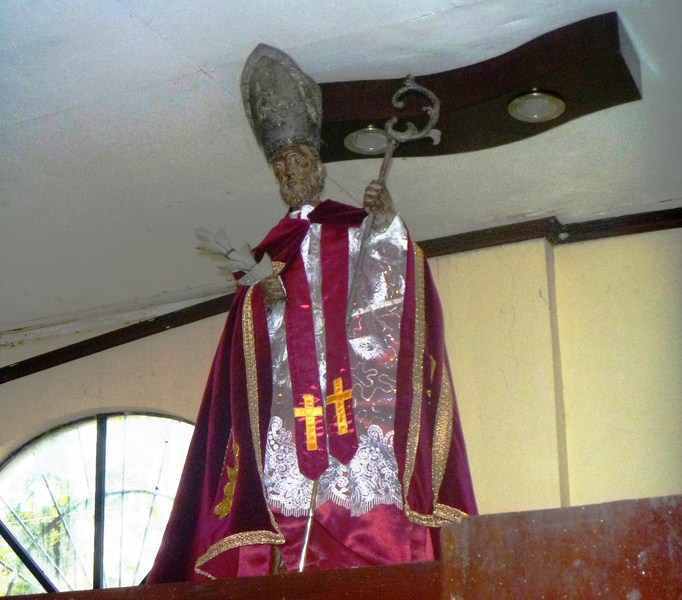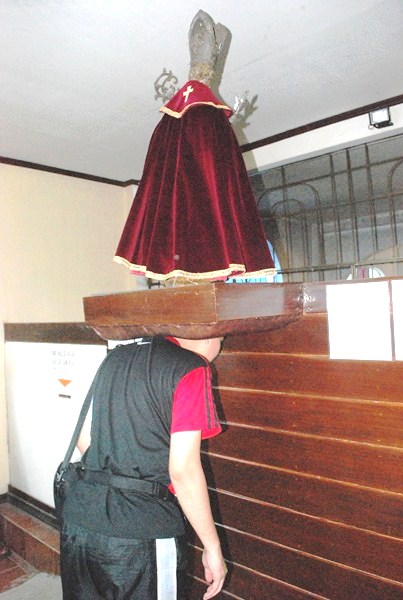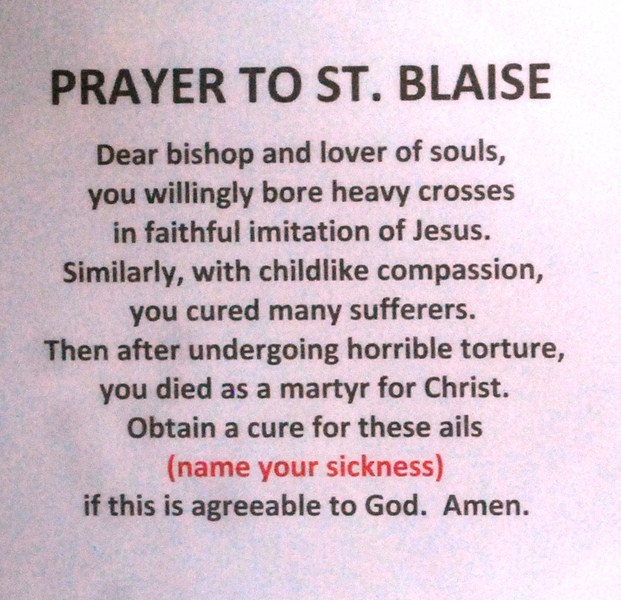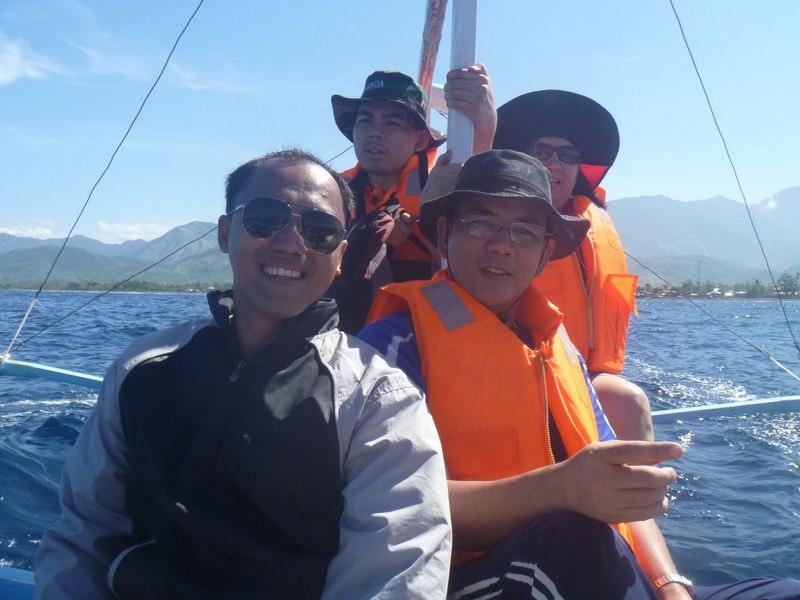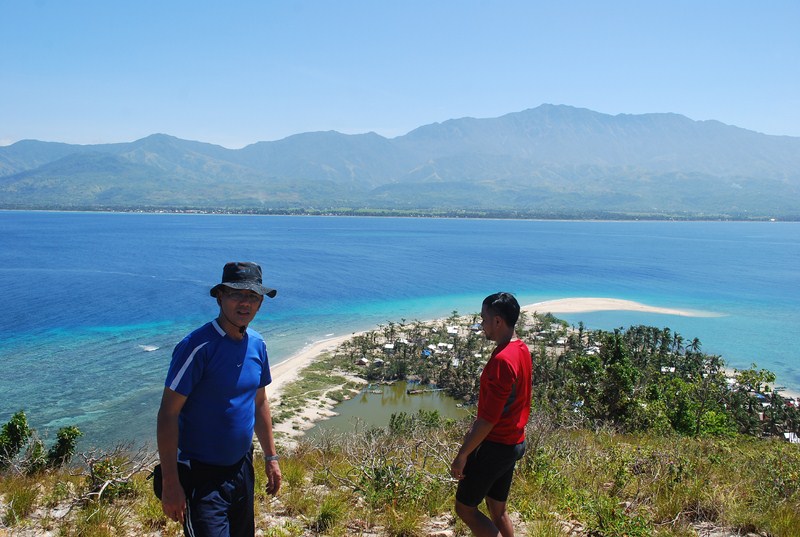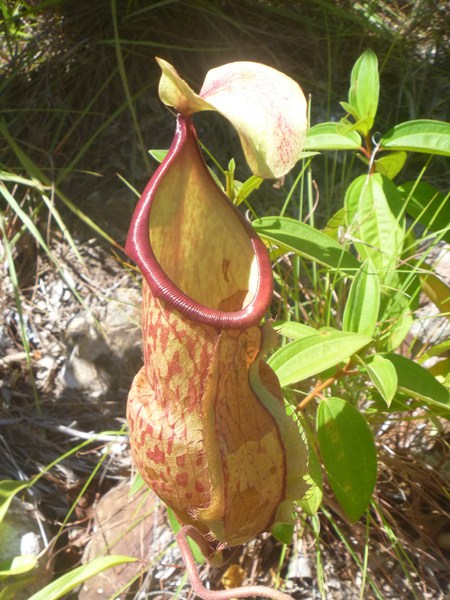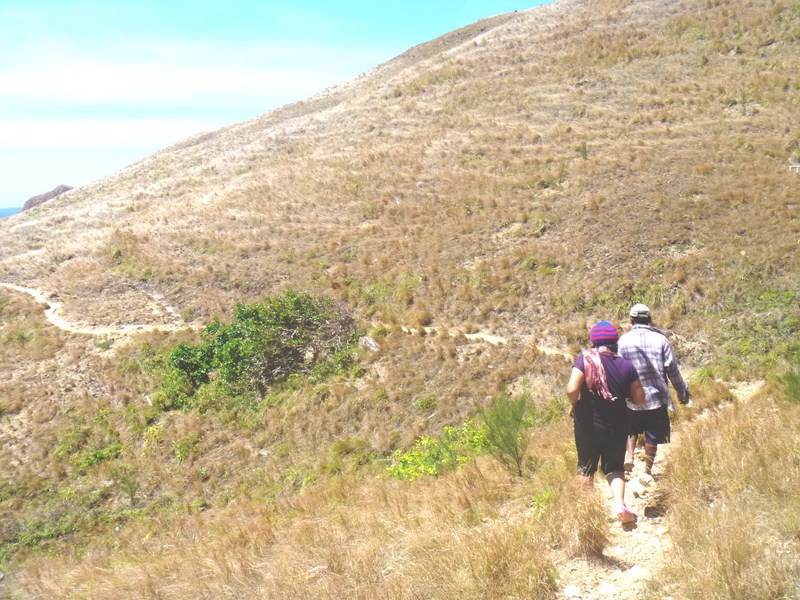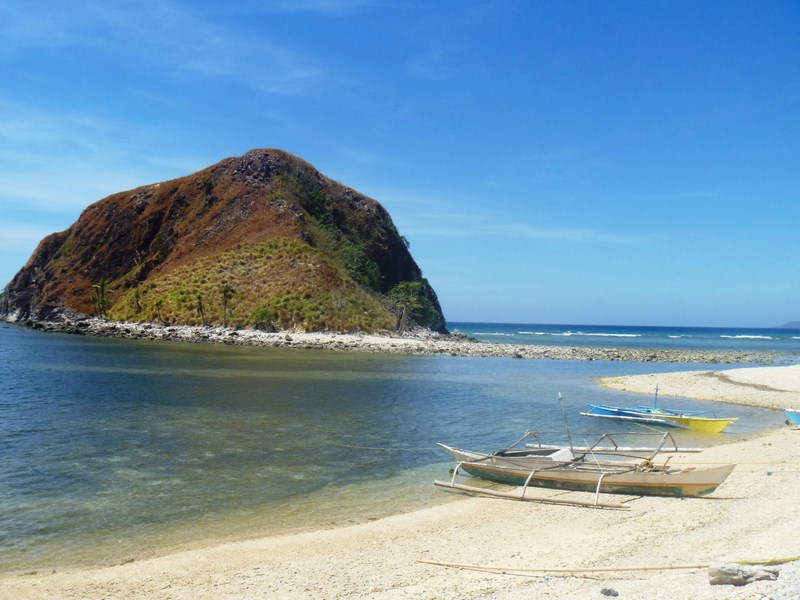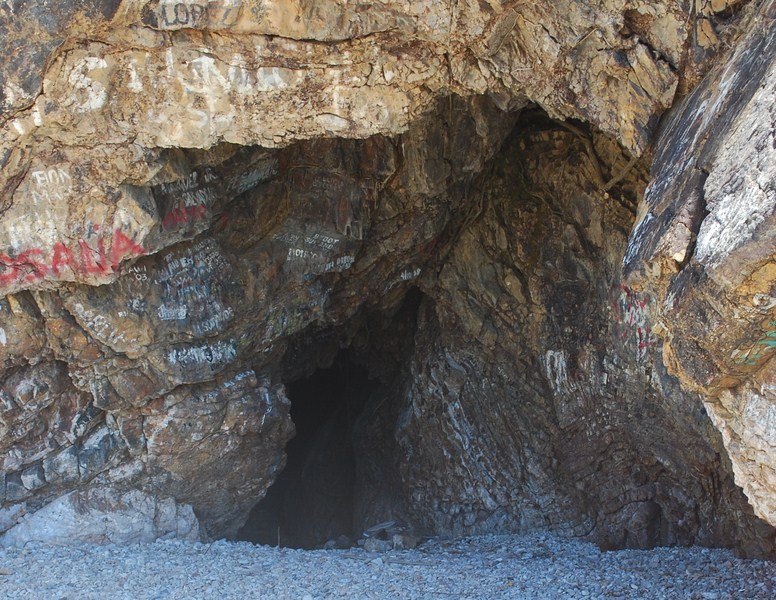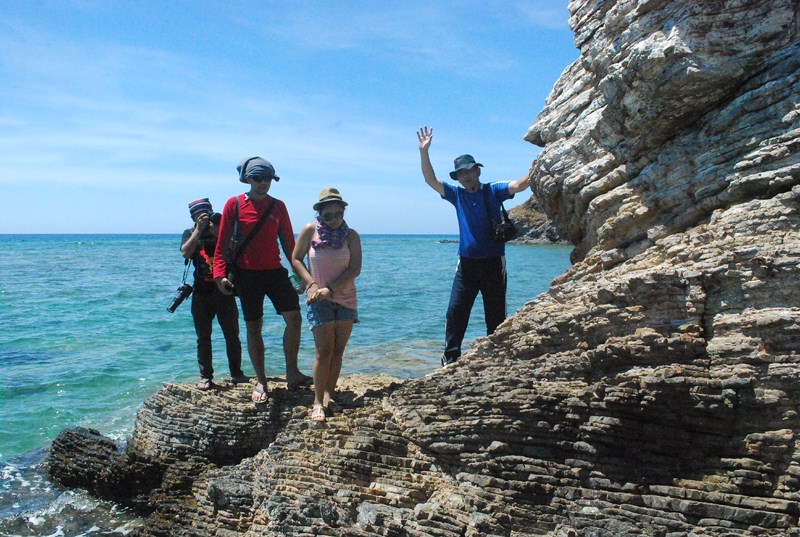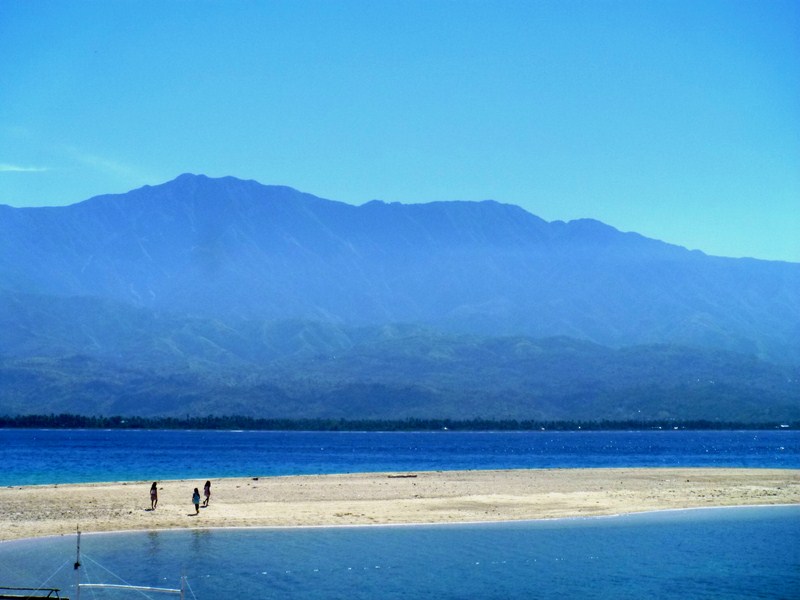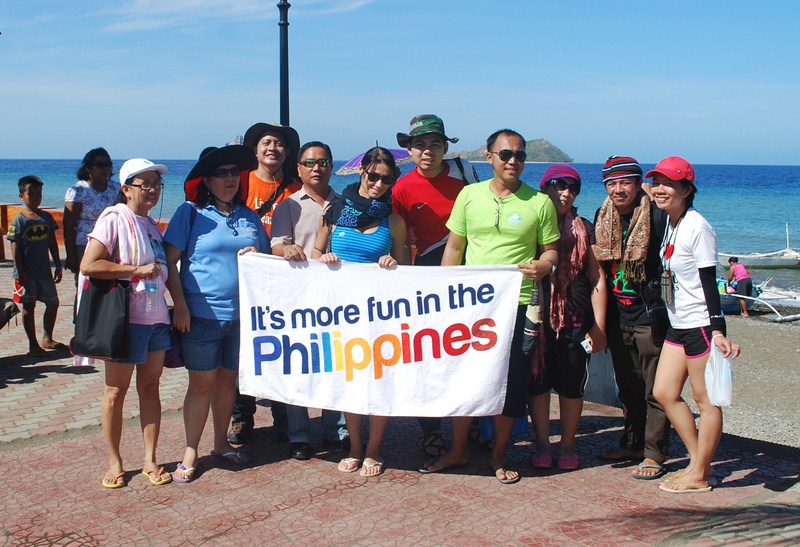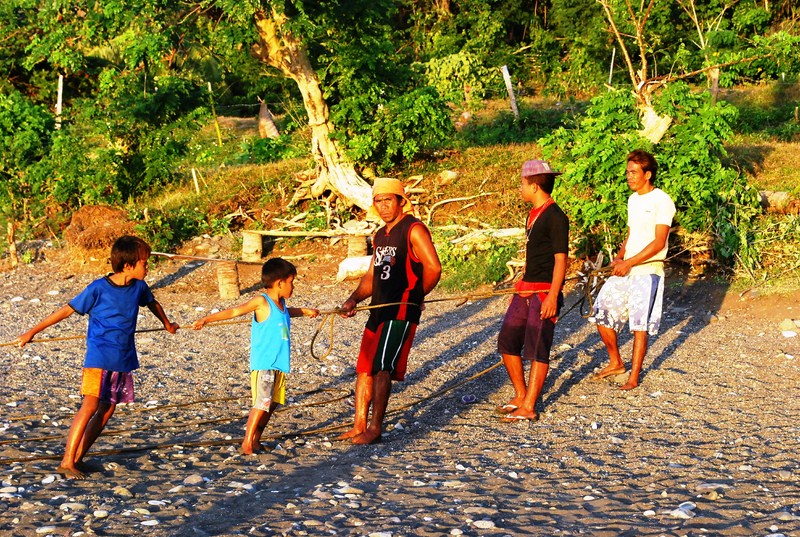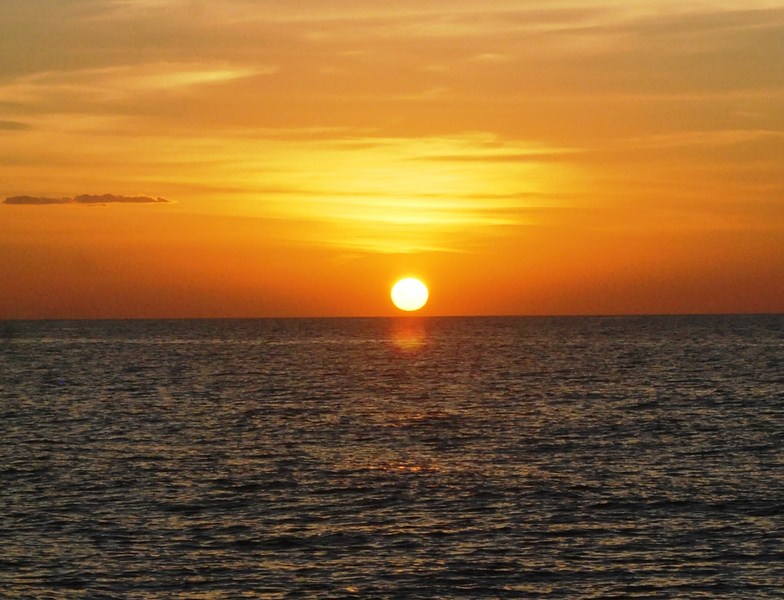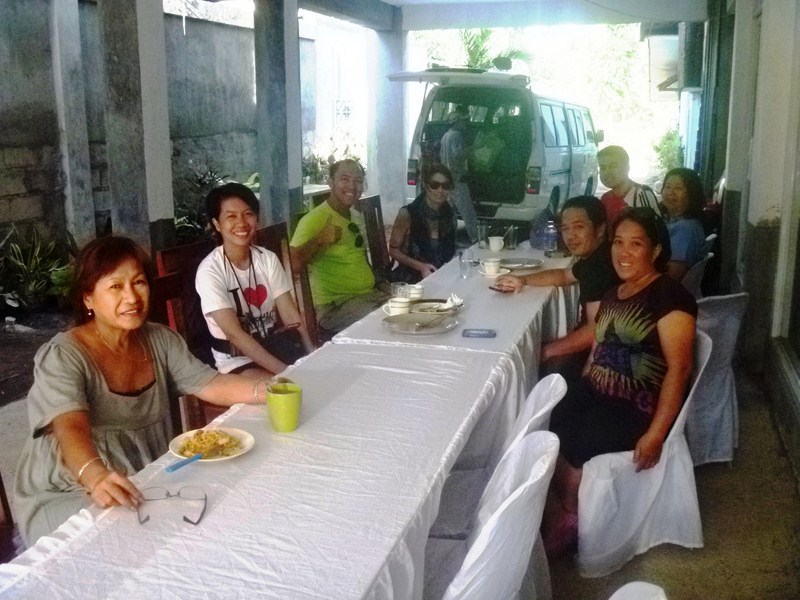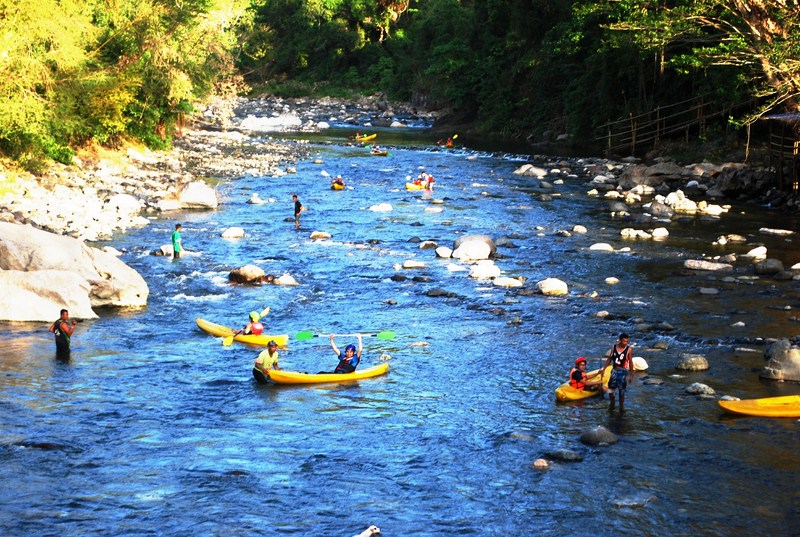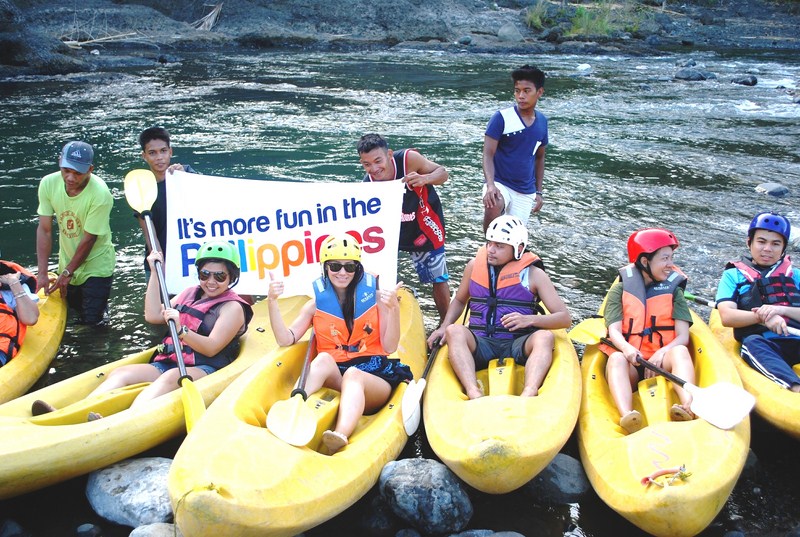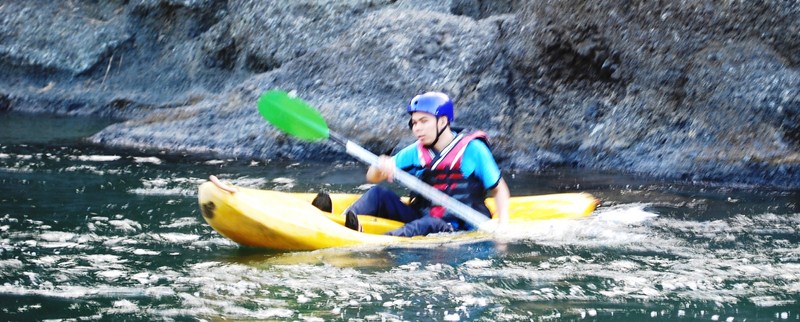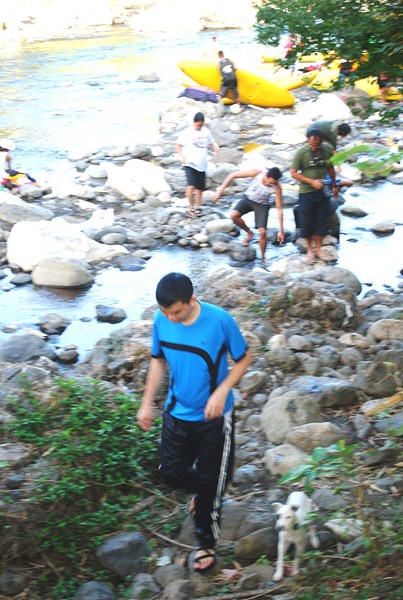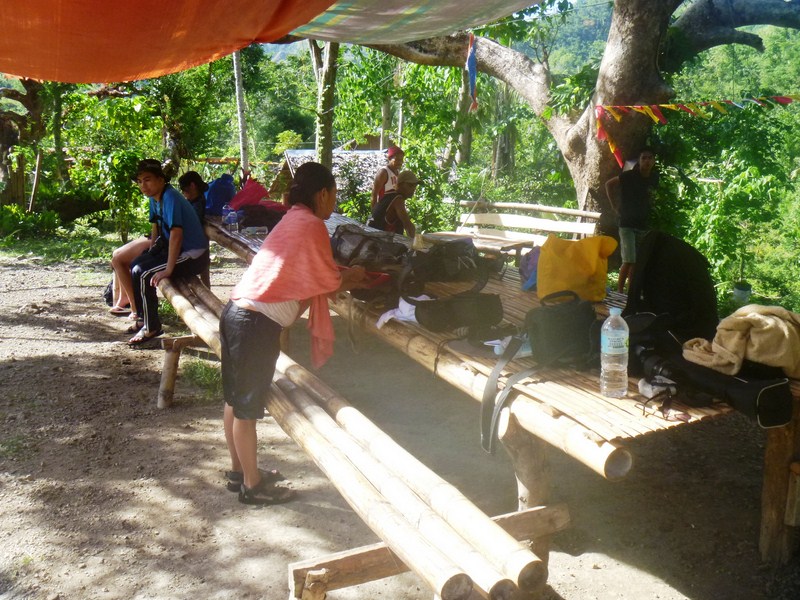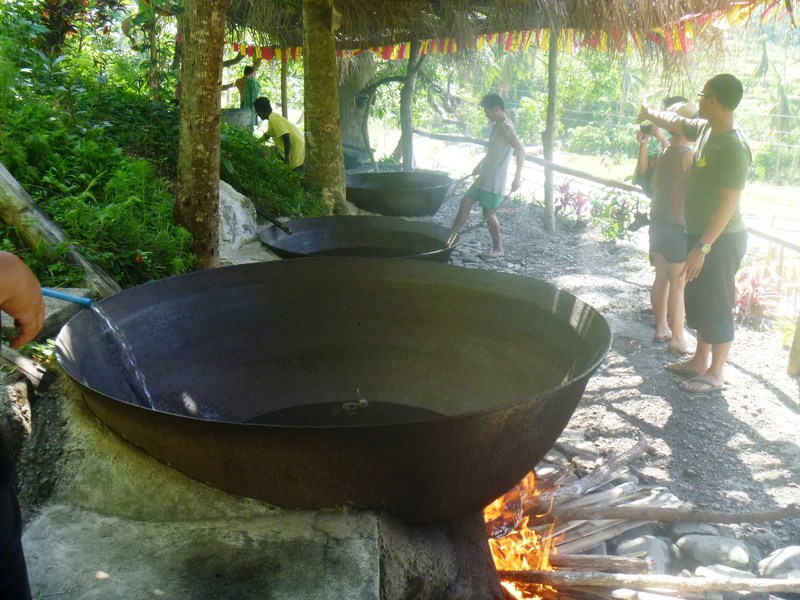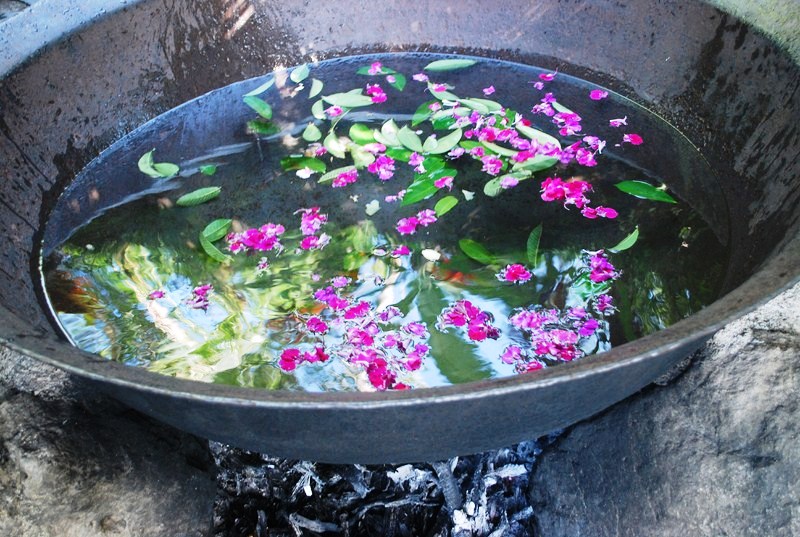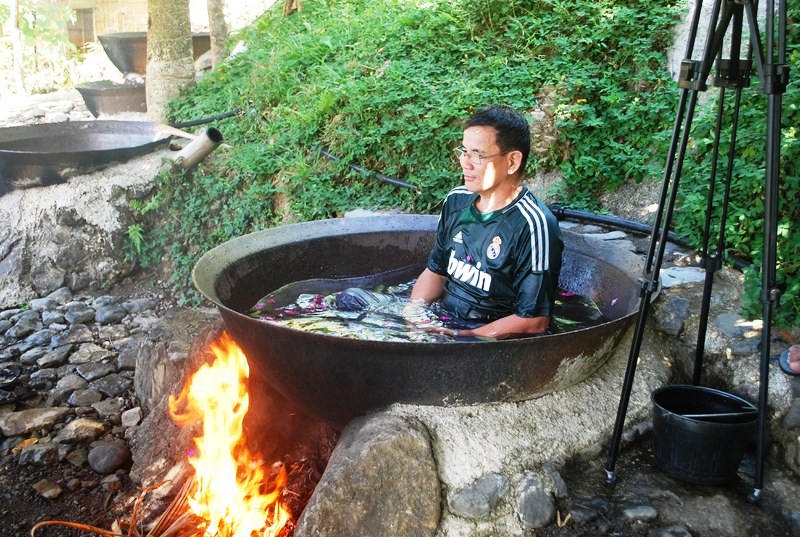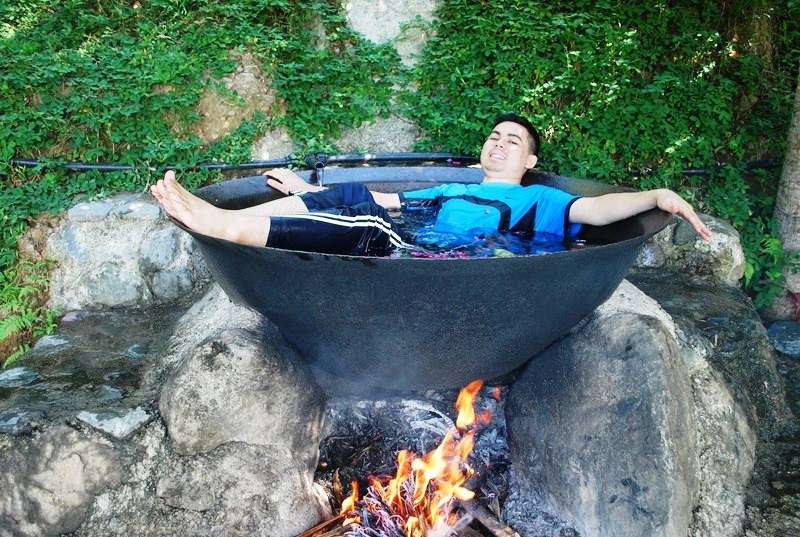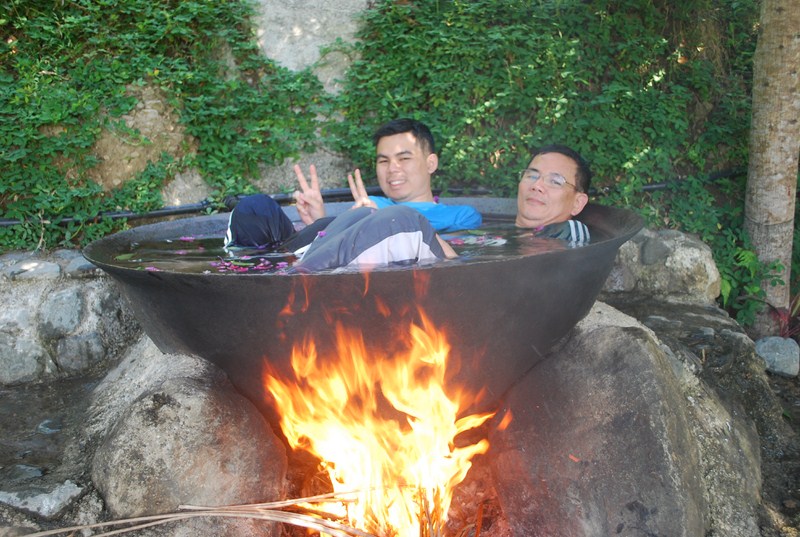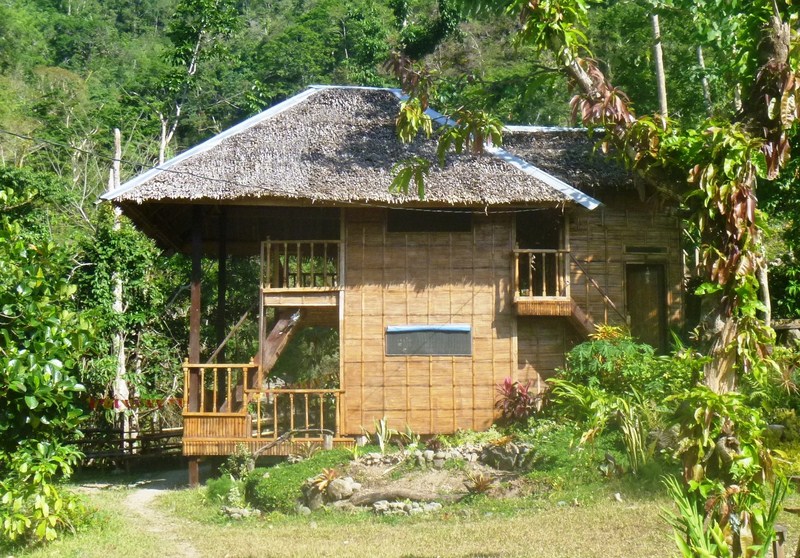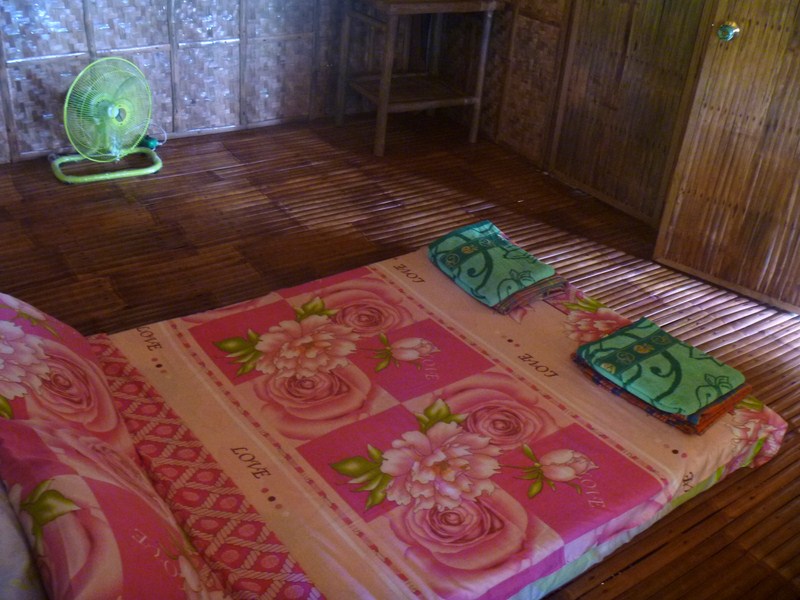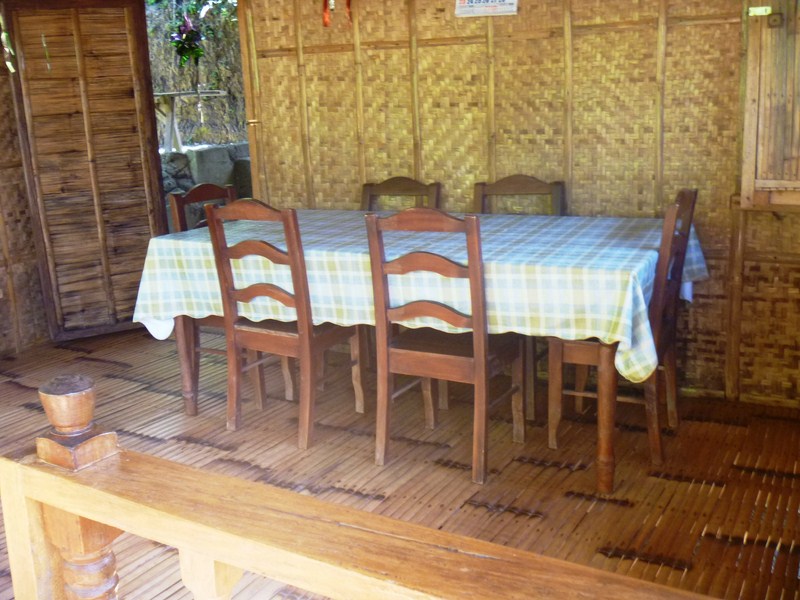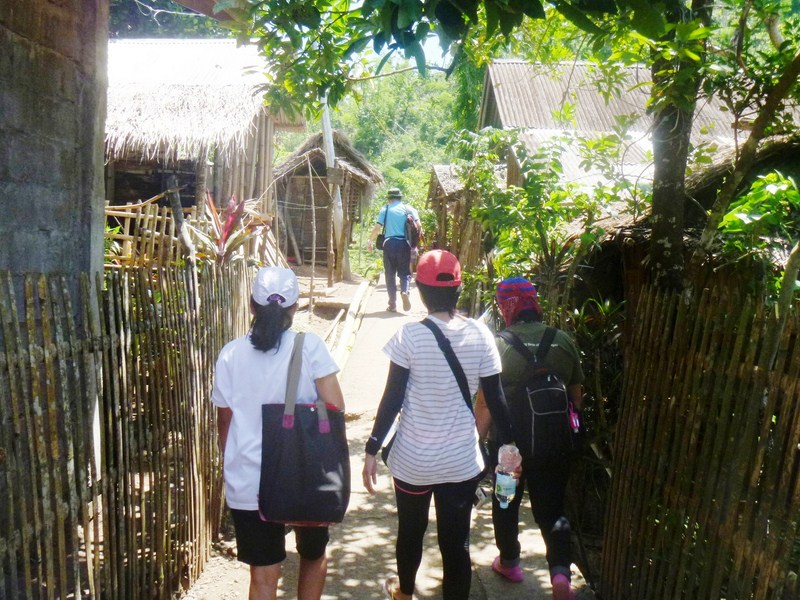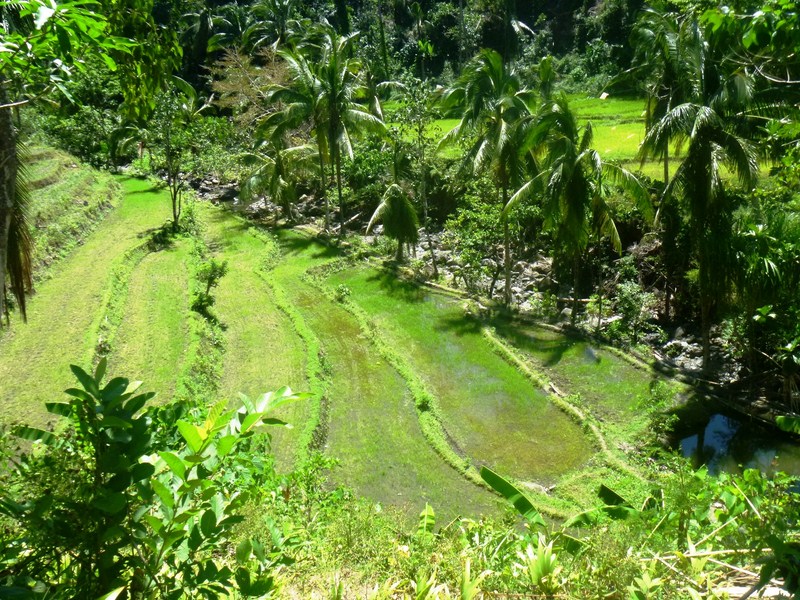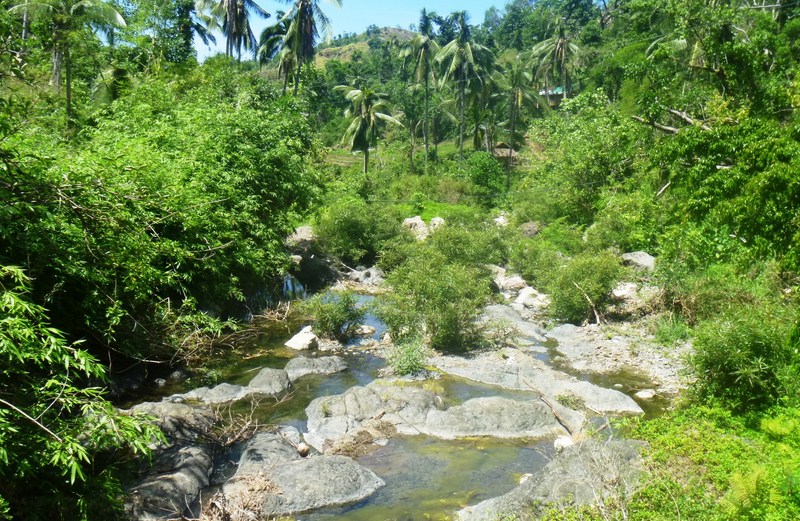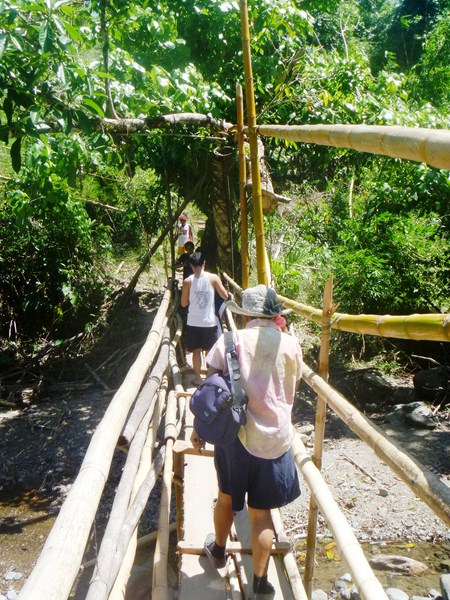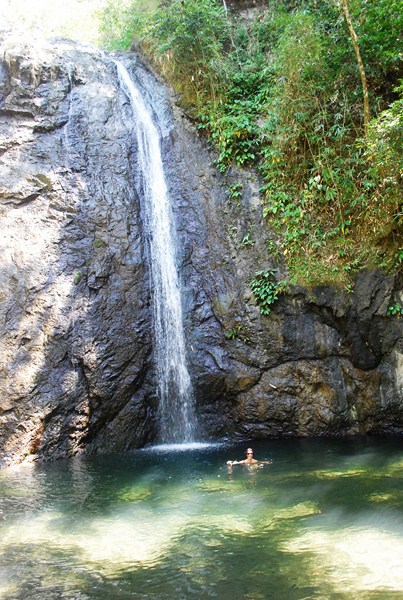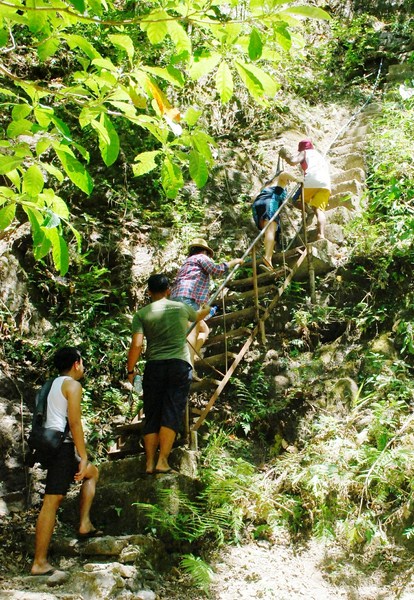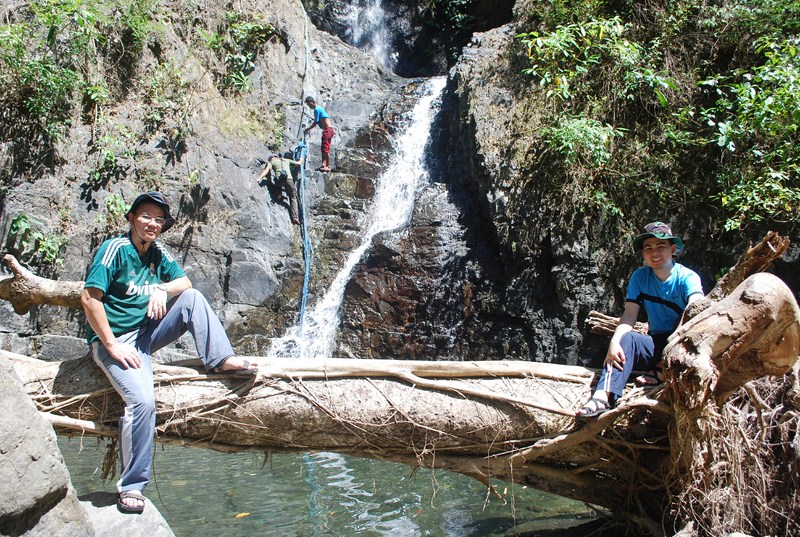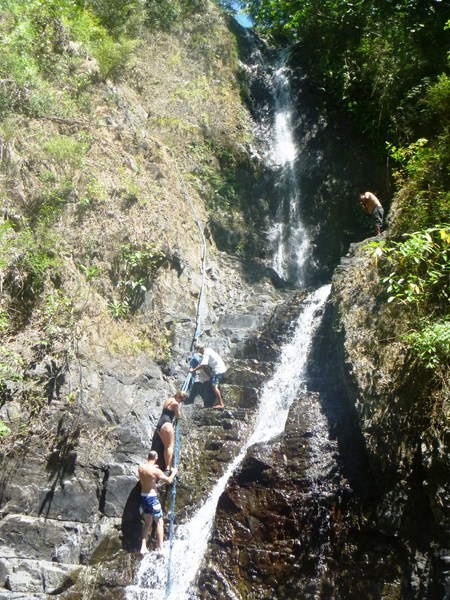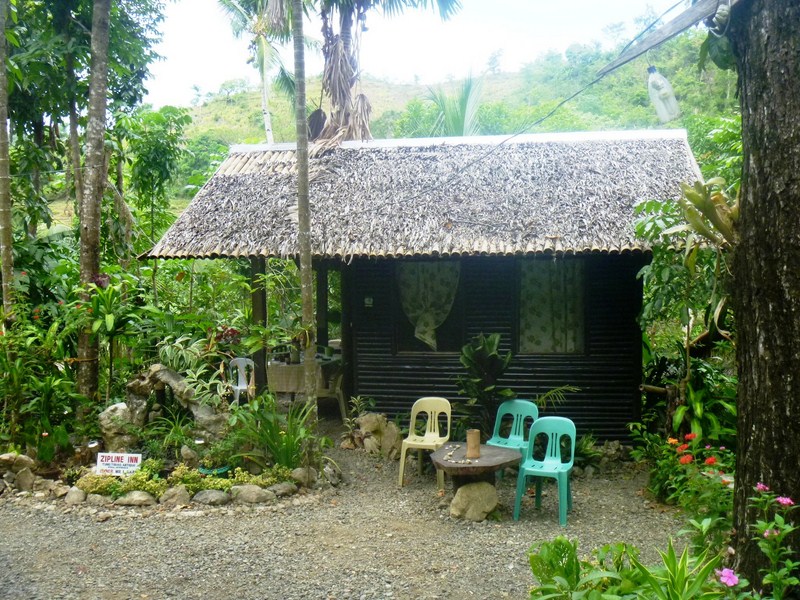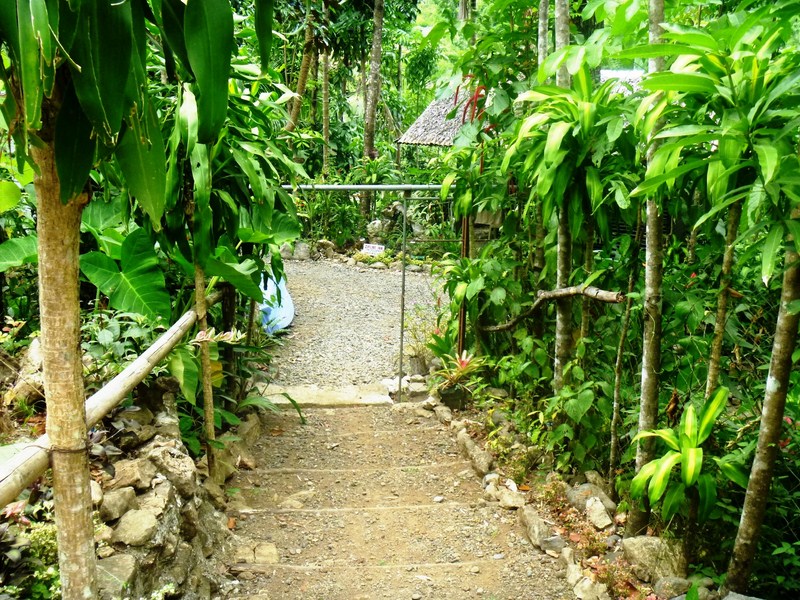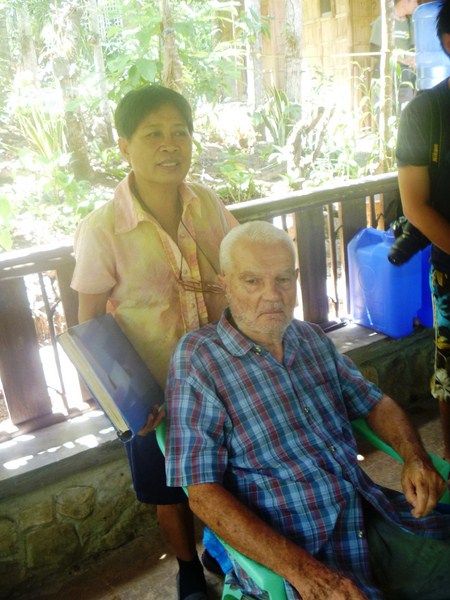We had barely caught our breath, upon our return to Malumpati Spring, when we were told to assemble at the dam area. Here, three bamboo rafts awaited us, to quietly cruise, downstream, the 3 to 4-km. length of the Bugang River. Unique modes of transportation here, these rafts, only assembled when needed, were manned by 3 BCBTO polemen to steer the raft – one standing in front and two at the rear.
Jandy, Eman and I rode in one raft. Through this scenic cruise, we appreciated this river’s rich ecosystem of diverse and lush flora and fauna as we snake along the clear, emerald green waters of the river. The hour-long raft trip took us along a surreal landscape of decades-old trees (some of them gnarled), mangroves, coconut trees, bamboo groves and nipa palms that lined the banks all along the turquoise water’s edge. Some of the trees were felled by the fury of Typhoon Yolanda International name: Haiyan) which also struck the town.
We sometimes had to duck to avoid hitting overhanging tree branches along the way but, altogether, the river cruise produced a calming effect on me. Where the water level was shallow and the current slow, we could clearly see, right through the bottom, the colorful stones and rock formations underneath. Dipping my feet at the river’s cool waters was an extreme delight.
At some part of the river, some rapids would form, something our expert polemen could negotiate with ease and precision. At the other parts of the river, we passed under a number of bamboo or wooden bridges and encountered small islands, a number of grazing carabaos along the river bank and some unsightly bamboo fish traps.
On our arrival at Manlonggong Point, beneath the Guia Bridge, we alighted from our bamboo rafts and transferred to smaller bancas manned by one boatman each. I only had time to rub some suntan lotion before boarding my banca. Jandy rode on another one.
This time, we were to paddle, the rest of the river’s length, out towards the Bugang Estuary facing Pandan Bay. Pandan riverfolk waved and cheered us along the river bank as Jandy and I, as well as the others, paddled furiously towards this finish line.
Our boat race ended at the Bugang River Estuary Fishport and, from there, we again boarded the van for the short drive to Le Palme Beach Resort. Here, we were to have a merienda of kakanin, bibingka and buko juice at its Cocco Beach Bar and Restaurant facing the white sand beach of Pandan Bay.
Check out “Resort Feature: Le Palme Beach Resort“
Le Palme Beach Resort: Brgy. Zaldivar, Pandan, Antique. Tel: (036) 278-9037. Mobile number: (0912) 335-5293. E-mail: support@lepalmebeachresort.com and lepalmebeachresort@yahoo.com. Website: www.lepalmebeachresort.com.

